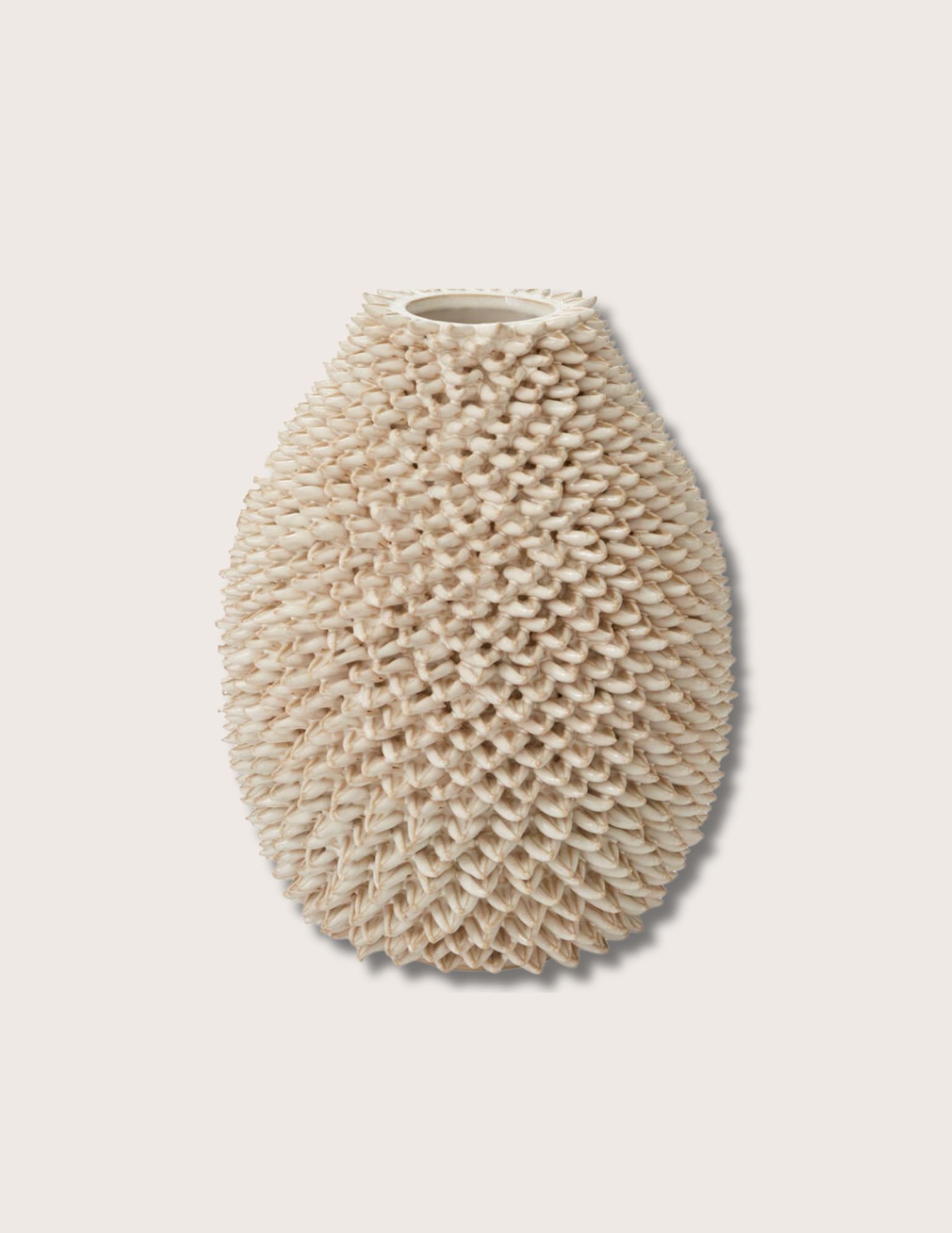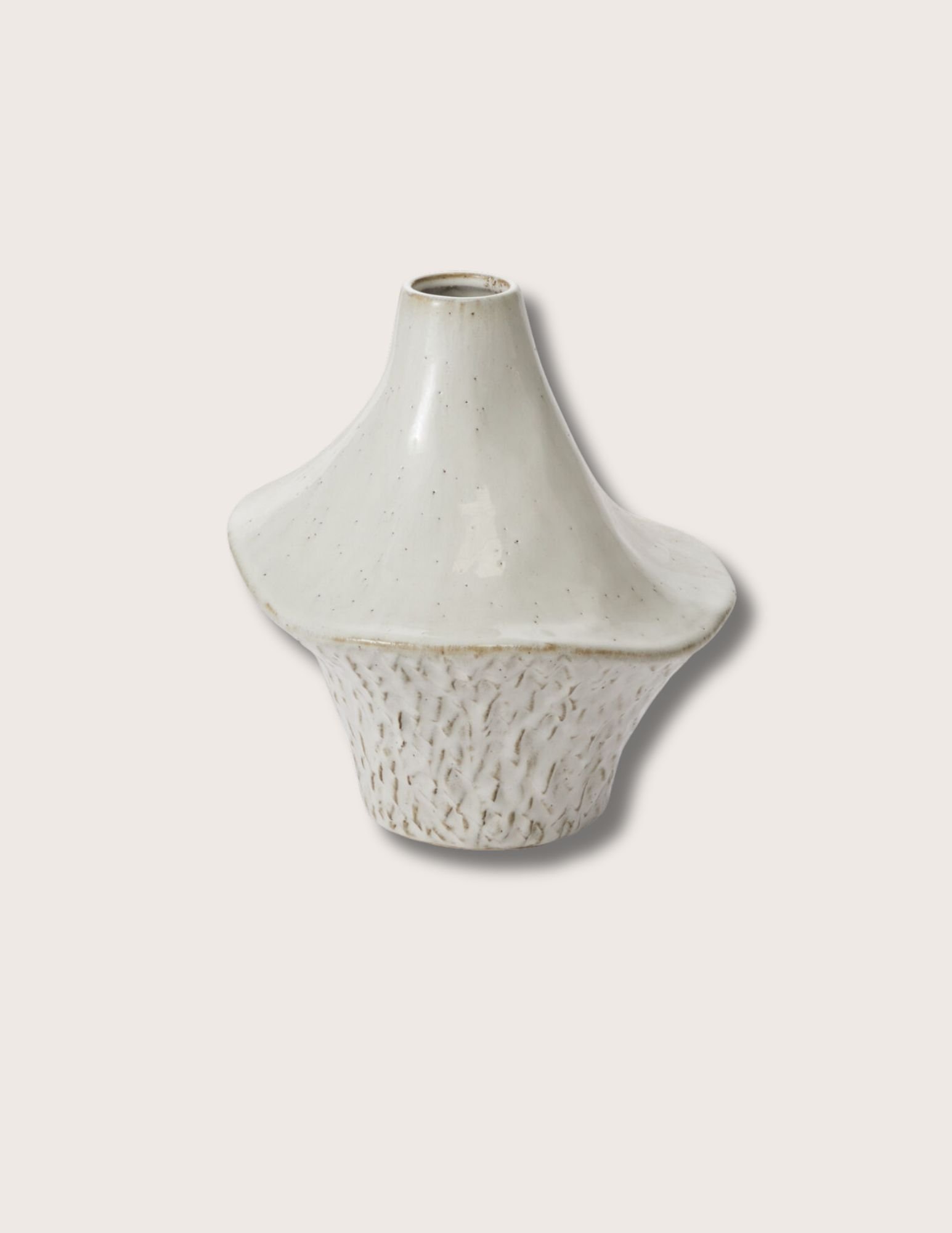 Image 1 of 2
Image 1 of 2

 Image 2 of 2
Image 2 of 2



David Vase
Details
The shapely stoneware David Vase features a tapered opening, broad body on top, narrow base, and textured brown matte finish. This timeless vessel layers with other neutrals or grounds bolder pops of color on any surface. It's the perfect scale for a branchy arrangement or colorful bunch of florals.
Editors' Note
David Drake, more famously known as “Dave the Potter,” was a 19th century African American man, enslaved for the purpose of making pottery. Yet through his skill, humor and bravery, Drake did more than that — he made history. Drake — a surname the artist took from one of his enslavers following his emancipation in 1865 — lived and labored in the Edgefield District of South Carolina, birthplace of what is now remembered as Edgefield Pottery. A combination of African, European, Native American and Chinese methodologies that resulted in a new kind of alkaline-glazed stoneware, Edgefield Pottery was used to create the types of large vessels common to plantation life in the antebellum south. Typically created by and for enslaved people, such vessels frequently lacked any creative flourishes or design aesthetic, and were almost never signed by the artisans that created them. Drake broke these and other taboos while displaying his creativity and mastery of his craft. Not only did he sign many examples of his work, Drake inscribed messages, poems and other humorous notes, openly breaking a viciously enforced law against literacy for Black people — enslaved or free — within the state. Enacted in 1834, the law passed in the same year as Drake’s oldest recorded work, which he signed with the word “Concatination.” From there, Drake progressed into messages and poems, drawing acclaim rather than punishment for his work. Moreover, the artist showed his quality by making massive vessels, capable of holding as many as 30 gallons, compared with others of the period, which commonly held 3. Credited with creating thousands of vessels, David Drake takes his place alongside fellow enslaved ceramic artists Shep Davis, Mariah Day, Fortune Justice, and Pharoah Jones, inspiring the naming of this piece.
Details
The shapely stoneware David Vase features a tapered opening, broad body on top, narrow base, and textured brown matte finish. This timeless vessel layers with other neutrals or grounds bolder pops of color on any surface. It's the perfect scale for a branchy arrangement or colorful bunch of florals.
Editors' Note
David Drake, more famously known as “Dave the Potter,” was a 19th century African American man, enslaved for the purpose of making pottery. Yet through his skill, humor and bravery, Drake did more than that — he made history. Drake — a surname the artist took from one of his enslavers following his emancipation in 1865 — lived and labored in the Edgefield District of South Carolina, birthplace of what is now remembered as Edgefield Pottery. A combination of African, European, Native American and Chinese methodologies that resulted in a new kind of alkaline-glazed stoneware, Edgefield Pottery was used to create the types of large vessels common to plantation life in the antebellum south. Typically created by and for enslaved people, such vessels frequently lacked any creative flourishes or design aesthetic, and were almost never signed by the artisans that created them. Drake broke these and other taboos while displaying his creativity and mastery of his craft. Not only did he sign many examples of his work, Drake inscribed messages, poems and other humorous notes, openly breaking a viciously enforced law against literacy for Black people — enslaved or free — within the state. Enacted in 1834, the law passed in the same year as Drake’s oldest recorded work, which he signed with the word “Concatination.” From there, Drake progressed into messages and poems, drawing acclaim rather than punishment for his work. Moreover, the artist showed his quality by making massive vessels, capable of holding as many as 30 gallons, compared with others of the period, which commonly held 3. Credited with creating thousands of vessels, David Drake takes his place alongside fellow enslaved ceramic artists Shep Davis, Mariah Day, Fortune Justice, and Pharoah Jones, inspiring the naming of this piece.

Additional Details
Single vase
Weight: 9.5 lbs
Material: Stoneware
Opening Size: 5"
Dimensions: 12.5” x 12.5” x 12.5”
Base Dimensions: 7.5"
Made to order
Ships within the continental US in 7-10 business days


















